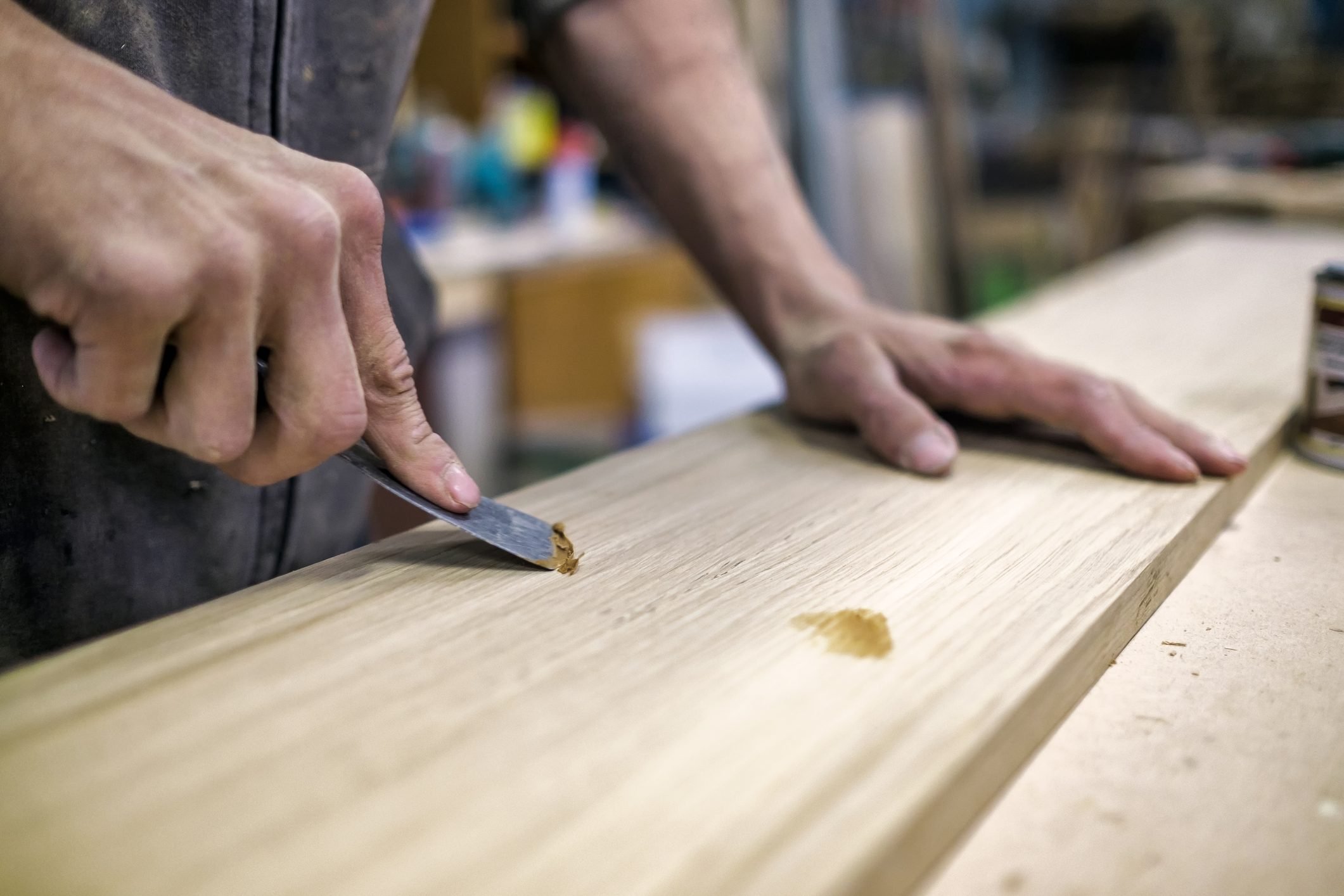Retailers often fail to distinguish between wood putty and wood filler, but there's a big difference.
Our editors and experts handpick every product we feature. We may earn a commission from your purchases.Learn more.


Retailers often fail to distinguish between wood putty and wood filler, but there's a big difference.
Our editors and experts handpick every product we feature. We may earn a commission from your purchases.Learn more.
Various types of varnish and lacquer have been around at least since the time of the ancient Egyptians, so it’s fair to suppose that craftspeople through the ages have mixed the same natural hardening resins found in varnish and lacquer with wood dust, limestone or whatever else they had on hand to make wood filler.
Contemporary woodworkers are also familiar with wood putty which, unlike wood filler, is almost always made from synthetic chemicals. However, many modern wood fillers are also synthetic. This blurs the line between putty and filler, making the decision about which to use for a particular purpose a little complicated. Epoxy wood fillers, which combine the characteristics of putty and filler, blur the line even more.
And on top of all that, you can’t count on manufacturers or retailers to help you decide which product to use because they don’t always make a clear distinction between wood filler and wood putty. Let’s clear up the confusion right now: Wood fillers can be sanded and stained and are best used on unfinished woodwork. Wood putty is best for repairing cracks and small holes on finished woodwork.
On This Page
Wood filler is a suspension of a sandable material in a solution of hardening resin that has the ability to soak into wood fibers and bond with them. An example the ancients may have used — and one still used by woodworkers today — is a mixture of wood dust (cellulose) and lacquer, varnish or glue. Some contemporary products, such as DAP’s Plastic Wood All Purpose Wood Filler, combine wood fibers with a solvent-based hardening resin while others combine gypsum, limestone or attapulgite (a fibrous clay mineral) in a solvent- or water-based hardening resin.
Wood fillers have three defining characteristics: They harden as they cure, they are sandable and they are stainable. Most wood fillers are uniformly sandable, but stainability varies. Fillers that contain real wood fibers tend to stain better than those high in mineral content, but most fillers are porous enough to allow at least some stain to penetrate.
Wood grain filler is a spreadable type of wood filler that you can use to fill the grain of flat interior surfaces, such as tabletops and countertops. You typically spread it with a putty knife and sand it flat before applying the finish.
Traditional one-part wood filler is great for patching interior woodwork before staining and finishing. You can use it to:
One-part wood fillers are generally recommended only for interior use, but two-part fillers, such as Minwax High Performance Wood Filler, include a hardener that turns the filler into a rock-hard substance suitable for drilling and holding screws. Two-part fillers work both indoors and outdoors and are closely related to wood putty because they are dense, non-porous and generally aren’t stainable, although they are sandable.
Wood putty is denser than wood filler, and it’s so pliable you typically have to apply it with a putty knife. Like window glazing or plumber’s putty, wood putty is a mixture of plastic and oil-based solvents. Because it doesn’t harden like wood filler, wood putty won’t shrink or crack, but you can’t sand it. You can’t stain it either, although many types of putty, such as the those in the Coconix Floor and Furniture Repair Kit, are colorized to match various wood tones, so staining is unnecessary.
Wood putty is intended for covering nail holes and repairing holes, gouges and nicks on finished surfaces. If you want to hide a scratch on a dining room table, for example, you would reach for wood putty rather than wood filler. Putty sticks, such as Guardsman Wood Repair Filler Sticks, make repairs on finished furniture easy.
Wood putty has both exterior and interior applications. You can use it to: